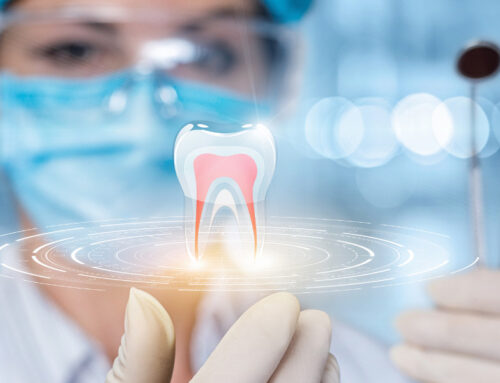The Science Behind Dental Veneers: Understanding the Procedure and Results
Have you ever seen someone with a perfect smile and wondered how they achieved it? Chances are, it was likely due to dental veneers. Dental veneers are thin pieces of porcelain that are custom-made for each patient, fitted over the front of their existing teeth to create an even and flawless smile.
As part of cosmetic dentistry, this procedure has become increasingly popular in recent years – but do you have a real understanding as to why or what exactly is involved? In this blog post, we will be delving deeper into the science behind dental veneers so that you can make an informed decision when considering whether they’re right for you or not. Read on to discover what kinds of things go into creating such beautiful smiles!
Dental veneers are a popular choice for those looking to improve the appearance of their teeth. They’re thin shells that are applied over existing teeth in order to give them an improved shape, size, and color. The process requires precision due to the intricate nature of the procedure. The veneers themselves are created using molds of each individual patient’s teeth, which gives them a custom-made fit and feel. They can also be shaped to address any other irregularities such as gaps between teeth or discoloration.
The science behind dental veneer procedures involves both dental and medical knowledge, as well as material sciences. Dentists must have a thorough understanding of both disciplines in order to ensure the best results for their patients. This includes having extensive knowledge of tooth anatomy and knowing what materials will create successful outcomes when combined with cosmetic dentistry techniques.
When it comes to selecting materials, dentists need to consider many factors, such as the strength and longevity of the material, as well as its cosmetic appeal. Porcelain is a very strong material, making it perfect for use on the teeth, but it must first be treated before being applied. Other materials such as composite resin, zirconia, and ceramic may also be used in some cases.
Once the material has been chosen, the dentist will use specific tools to shape the veneers so that they perfectly fit each patient’s individual smile. This includes making sure that all teeth are aligned correctly and that any gaps or chips are repaired. After this step is completed, a bonding agent is applied in order to permanently attach the veneer to the tooth’s surface. Lastly, light is used to cure the bonding agent, resulting in a beautiful and long-lasting smile.
The science behind dental veneers is complex yet essential for achieving successful results. Dentists must have an in-depth understanding of the procedure and materials being used in order to achieve the best outcome for their patients. With careful attention to detail and skillful application, dental veneers can provide a lifetime of improved smiles. If you’re ready to explore the possibilities of dental veneers, look no further than Herndon Dental Arts. Our highly skilled and friendly staff is focused and dedicated to delivering dental excellence with the most gentle and comfortable care possible. We also offer 3rd party financing options to make achieving your dream smile a reality. Contact us today and let us help you get on the path to transforming your smile!




